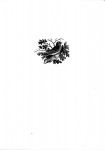Three Dogs, Thomas Bewick
The Three Dogs was engraved between 1784 and the publication of The Quadrupeds in 1790. The small cut of the terrier ‘marking’ his way was used as a tail piece in the same book. The blocks have retained their original condition to a remarkable degree.
The image is printed directly from the boxwood block engraved by Thomas Bewick, by Iain Bain using an Albion hand press made in 1836. The paper is 145gsm Zerkall moiuld-made dampened before printing.
Numbered edition of 500
About The Artist
Thomas Bewick was an English engraver and natural history author. Early in his career he took on all kinds of work such as engraving cutlery, making the wood blocks for advertisements, and illustrating children's books. Gradually he turned to illustrating, writing and publishing his own books, gaining an adult audience for the fine illustrations in A History of Quadrupeds.
His career began when he was apprenticed to engraver Ralph Beilby in Newcastle upon Tyne. He became a partner in the business and eventually took it over. Apprentices whom Bewick trained include John Anderson, Luke Clennell, and William Harvey, who in their turn became well known as painters and engravers.
Bewick is best known for his A History of British Birds, which is admired today mainly for its wood engravings, especially the small, sharply observed, and often humorous vignettes known as tail-pieces. He notably illustrated editions of Aesop's Fables throughout his life.
He is credited with popularising a technical innovation in the printing of illustrations using wood. He adopted metal-engraving tools to cut hard boxwood across the grain, producing printing blocks that could be integrated with metal type, but were much more durable than traditional woodcuts. The result was high quality illustration at a low price.

